Fast & furtive: Roadrunners, turkeys are resident speedsters
Have you ever heard that sometimes the only solution to a problem might be to run and hide? These two strategies often work well in nature and help many species survive in their particular environments. Some of our area birds are masters of one or both strategies and use these techniques to avoid danger and/or capture prey (or both!). Let’s discuss a few of the fast and furtive species occurring in our area. The different types, sizes, and even colors of some of these birds may surprise you!
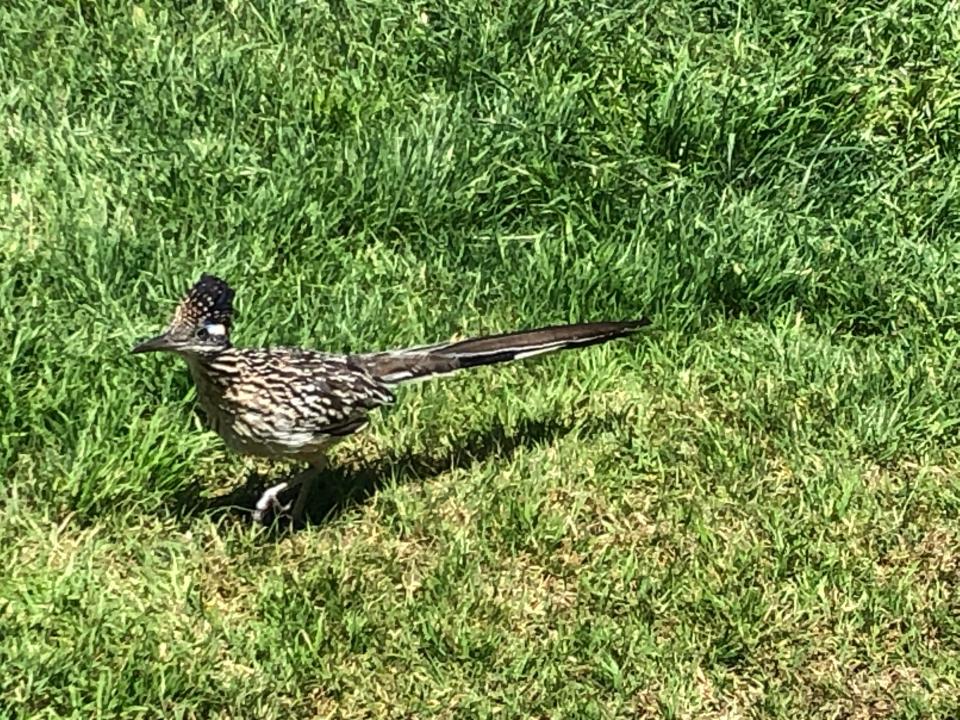
Greater Roadrunner: Faster than a human, but not a coyote
The Greater Roadrunner is probably our area’s best known resident runner; made famous as a speedster running from the ‘coyote’ in animated cartoons! The real Roadrunner is a member of the cuckoo family and has a distinctive crest, streaked brownish-white coloration, a relatively long and robust bill, blue to red colors around its eyes, a distinctly-upright stance, and long legs and tail. Roadrunners are commonly found arid habitats, brush lands, and areas with mixed, open, and low vegetation. Roadrunners seem almost reluctant to fly (although they can take flight if the need arises) and usually hunt by walking through areas and darting forward to catch prey in their bill.
The Greater Roadrunner can reach speeds of 15 – 20 miles per hour (mph), but can likely attain higher speeds during short bursts. This is faster than most of us can run but, in reality, much slower than the top speed of coyotes! Roadrunners hunt during daylight hours and can be quite conspicuous. Preferred food items include insects, reptiles, rodents, tarantulas, scorpions, some fruits and vegetation, and other birds. Although reputed to be great at dispatching rattlesnakes; this habit may be somewhat exaggerated.
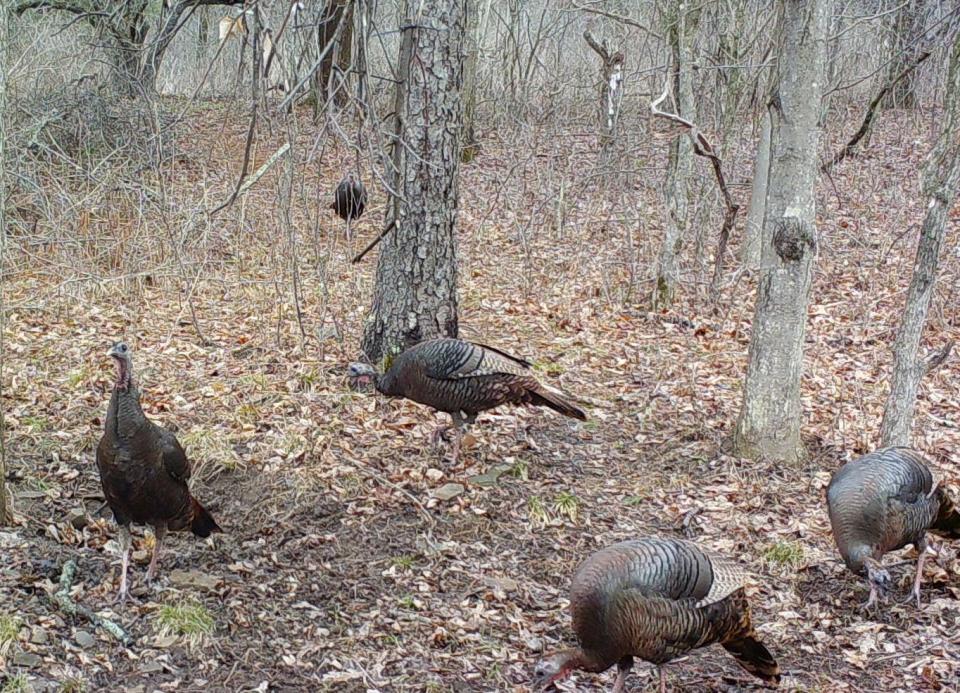
Wild domestic turkeys: Large and surprisingly quick on their feet
A very large, fast, but also surprisingly stealthy and furtive area resident is the wild version of the domestic turkey that many of us find on our tables for dinner during holidays!
The Wild Turkey was first domesticated in Mexico more than 2,000 years ago and then introduced to Europe, eventually returning to North America with European settlers. Unlike the domesticated bird, the Wild Turkey is always vigilant of its surroundings; except, perhaps, when males are fanning their tails, puffing out their feathers, strutting, and displaying in open areas in order to attract hens. Despite their very large size, if disturbed, a flock of turkeys, mostly composed of hens and young birds (called poults) can run and/or fly away very rapidly. If fact, Wild Turkeys can run as fast as 25 mph and fly at speeds up to 50 mph; thus easily escaping most of their natural predators! Wild Turkeys blend in well with their environments in woodlands, mesquite-grasslands, and riparian edges and areas. They usually roost in tall trees at night and leave these roosts in the mornings only when they can well survey their immediate surroundings. In most of our area, Wild Turkeys are more often heard calling to each other than they are seen!
Head for the bush: Quail know when to call it quits
Another much smaller, stealthy, upland game bird found more commonly in the western portions of our area is the Scaled Quail (sometimes commonly called the ‘Blue Quail’ or the ‘Cottontop Quail’). Feathers are blue-gray overall and have darker edges; giving them a scale-like look. Both sexes also have a short, fluffy, white crest. Scaled Quail frequent dry grasslands, mixed pasture, and brushland supporting a mix of grasses and weeds species such as broomweeds. Coveys of Scaled Quail travel about on foot and forage upon weed seeds, mesquite seeds, some grass seeds, leaves, and berries. Scaled quail also feed upon insects, especially in spring and summer months. These small, upland game birds prefer running as opposed to flying whenever danger is perceived. In fact, I have known quail hunters to call in their hunting dogs when it was discovered that the dogs were following a covey of Scaled Quail because the dogs can rarely get the covey to ‘flush up’ and fly!
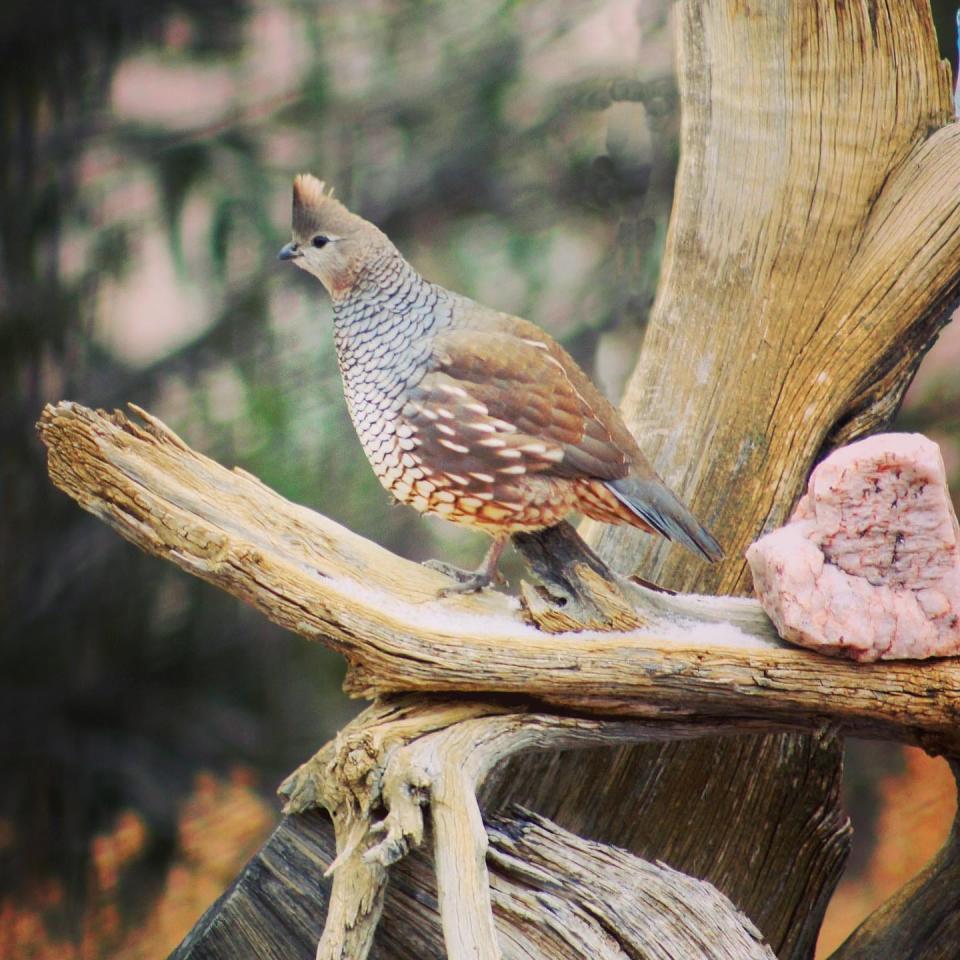
Burrowing owls are expert skedaddlers
Another surprising runner and hider is the Burrowing Owl. Burrowing Owls are usually found in association with prairie dog towns and areas with good populations of ground squirrels. In fact, many people are surprised when they are watching prairie dogs or ground squirrels and suddenly see a small owl (or owls) emerge from a burrow! Overall, Burrowing Owls are a light brown and white color with very long legs, distinct white eyebrows and white throats, and barred, speckled underparts. One tradition states that cowboys called Burrowing Owls “howdy birds” because of their habit of bobbing their heads and seeming to nod in greeting from burrow entrances. Open, grassland habitats kept short and clear by the associated prairie dog and/or ground squirrel foraging activities are ideal habitat; where the Burrowing Owls feed upon small mammals and a variety of insects, such as beetles, grasshoppers, moths, and other arthropods. These little owls feed during daylight hours during breeding season and also during dusk and at night. Prey is captured by the traditional method of swooping upon it or by the Burrowing Owl using its long legs and running along the ground in pursuit!
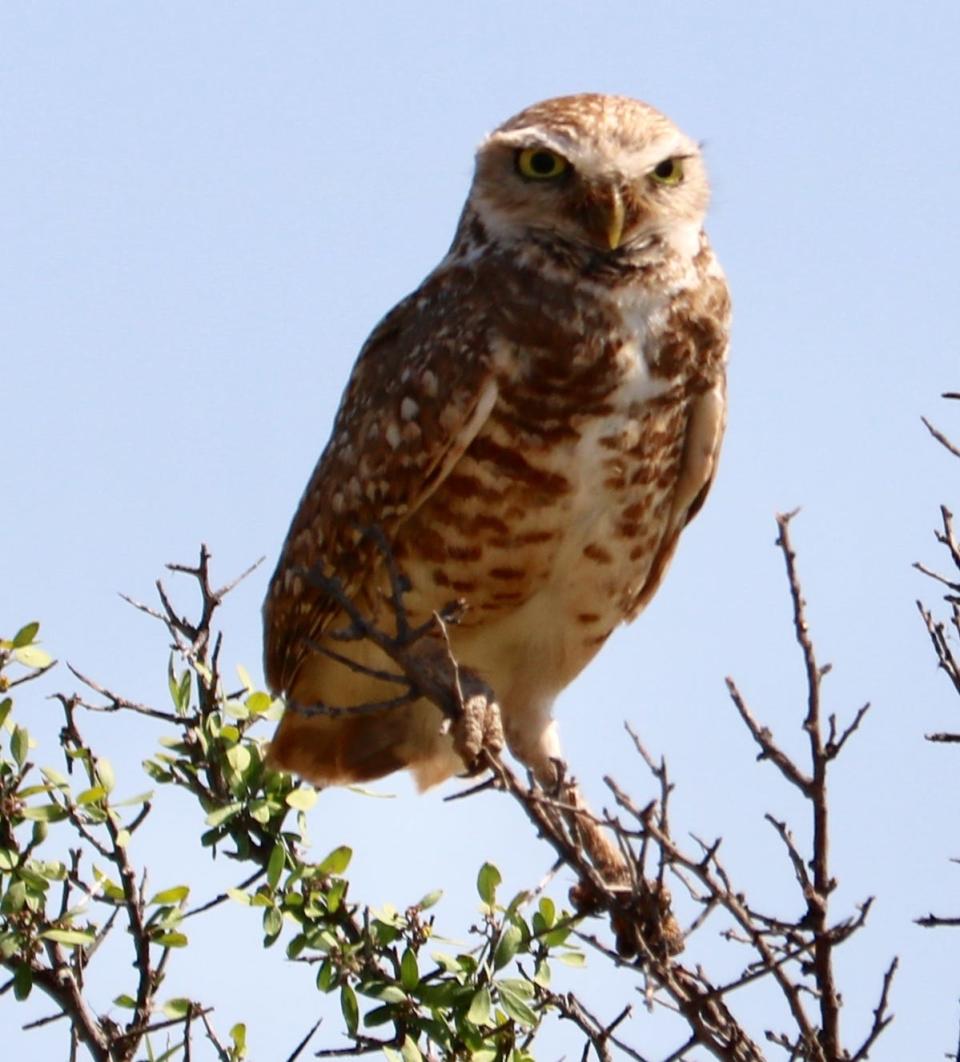
Painted bunting: Brightly colored but stealthy hiders
The final small, furtive little song bird that we will mention is a species that should, intuitively, be exactly the opposite! The males of this species are so brightly colored that, when you actually see one, you’ll at first wonder whether or not they are real! This is, of course, the Painted Bunting. Adult males have bright blue heads, red breasts, bellies, and rumps, greenish backs, and mixed colors of wings and tail! Females and immature males are a uniform plain, unstreaked green color. Painted Buntings are regular, common, summer residents throughout our area but they are more often heard than actually seen as they call with a continuous, unbroken, warble “pwich” and a buzzing, rising, “vvvit” flight song from woodlands, mesquite pasturelands, and shrubby, weedy areas. Males are most often sighted when singing atop vegetation during spring and summer breeding months; after which, many of the male Painted Buntings depart the area leaving the females to brood the nests and raise the young. Although the brightly colored males are easily seen when in open areas, their bright colors blend in very well with surrounding vegetation in their usual leafy, wooded, and weedy haunts; as do the green colors of the females and immature Painted Buntings! Various insect, weed and grass seeds are food items of Painted Buntings, but these colorful birds are rare at bird feeders; seeming to prefer foraging amid more secluded surroundings.
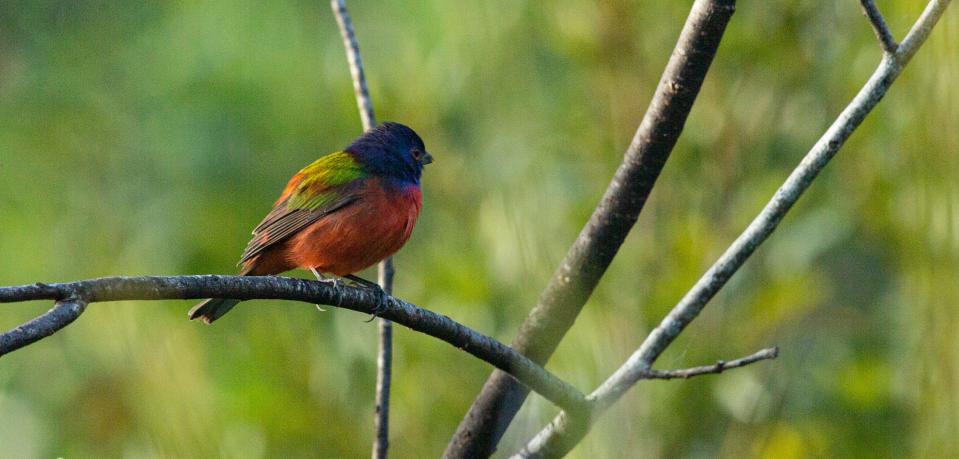
So remember to carefully watch your surroundings when out in our area and you may be lucky enough to observe some of these fast and furtive birds in their preferred habitats! However, like the birds you’re observing, you must be quick because these species don’t usually hang around for very long!

Jim Goetze is a retired professor of biology and former chairperson of the Natural Sciences Department of Laredo College with an avid interest in all aspects of the natural world. He can be contacted at gonorthtxnature@gmail.com
This article originally appeared on Wichita Falls Times Record News: Fast & furtive: Roadrunners, turkeys are resident speedsters

